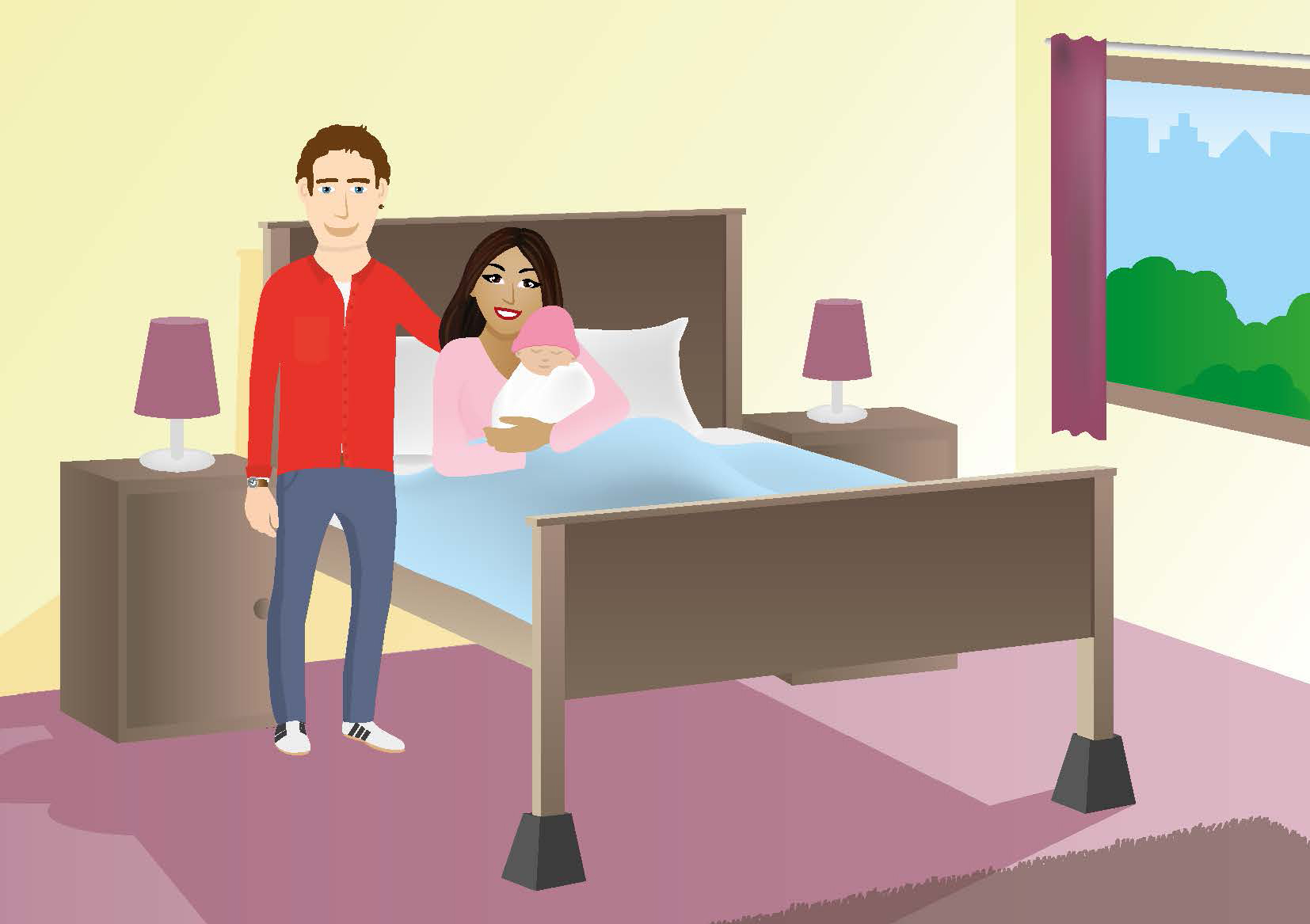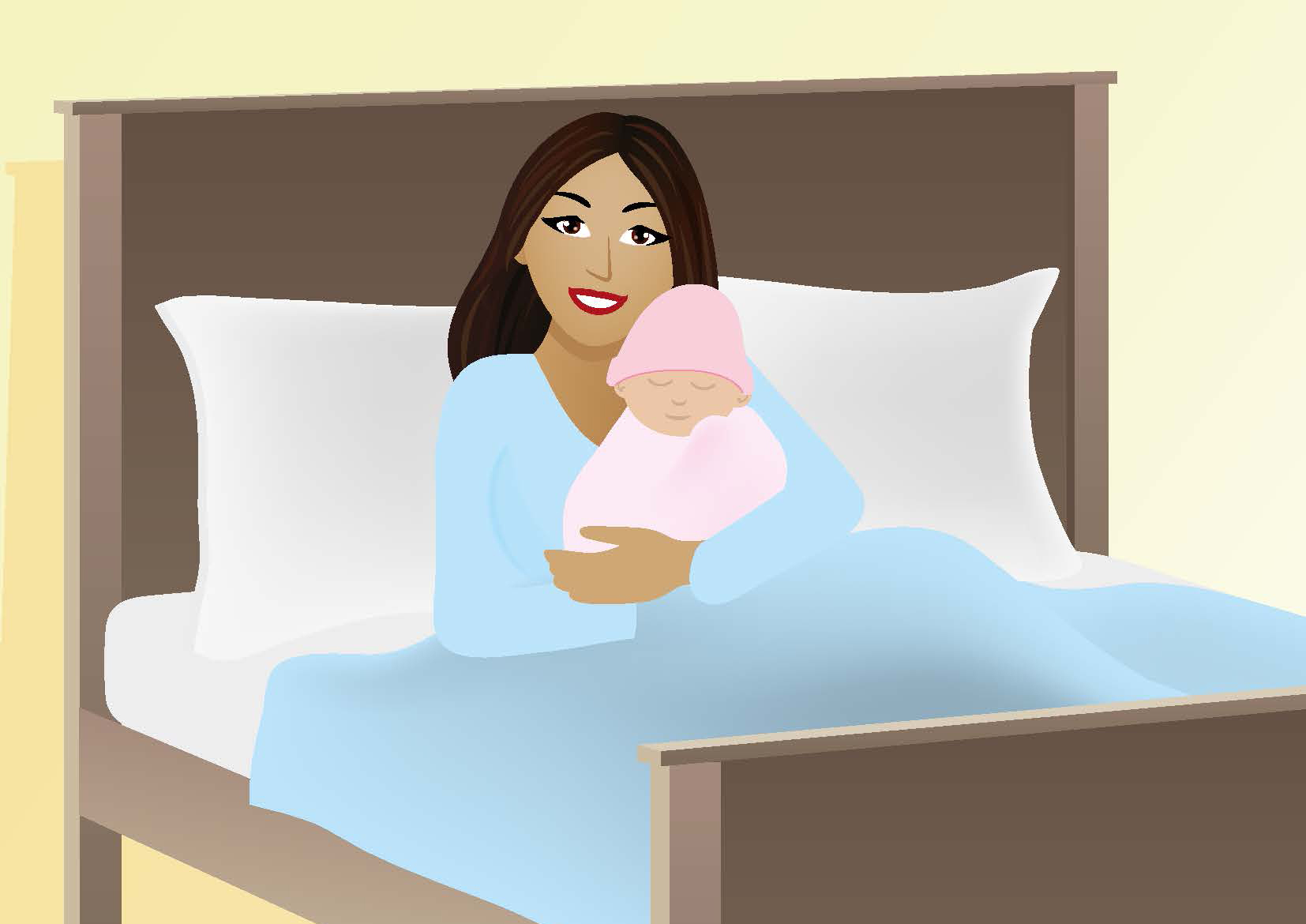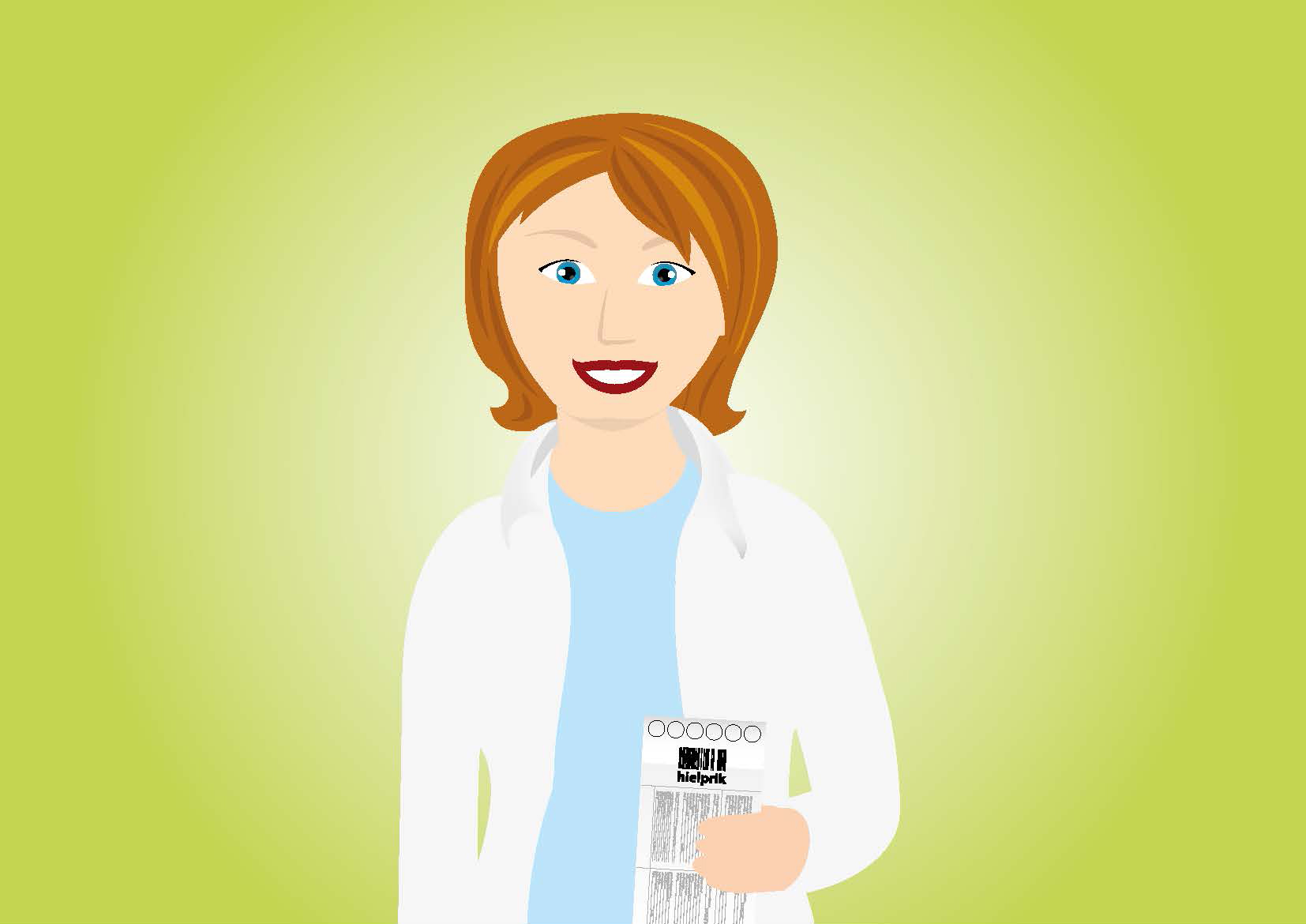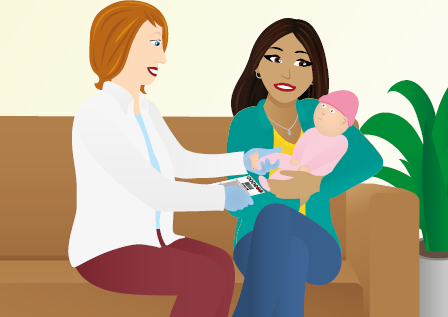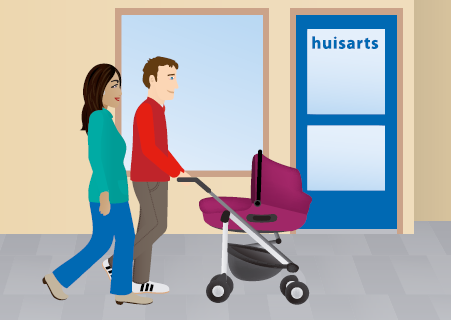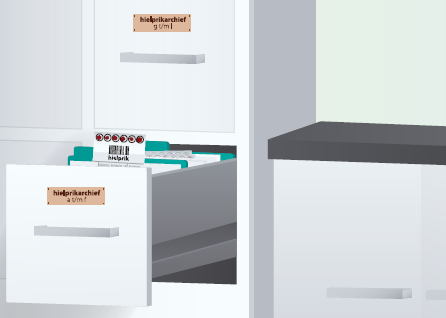Heel prick for Amanda and Jack’s baby
Plaatje 1
Tekst 1
Amanda and Jack have had a baby!
Amanda and Jack are happy.
Their baby was born today.
It is a girl.
Her name is Megan.
Jack goes to City Hall.
He says that the baby was born.
Plaatje 2
Tekst 2
The baby is a few days old
The baby is a few days old now.
She can now have a heel prick.
The heel prick test checks for a number of for serious illnesses.
The heel prick does not check for all diseases.
Plaatje 3
Tekst 3
Why a heel prick?
The care worker draws some blood from baby Megan to carry out the heel prick test.
They look at that blood to see if Megan has a serious illness.
These diseases are rare.
A baby suffering from an illness will be given medicine or special food.
In such cases, it is essential to start this treatment immediately.
It is important to let the heel prick be taken.
The heel prick is free. The heel prick is voluntary.
If you do not want your baby to have a heel prick test, please let your care provider know.
Plaatje 4
Tekst 4
Who does the heel prick?
A care worker from the well baby clinic will visit Amanda and Jack at home.
She does the heel prick.
Sometimes the care provider will make an appointment beforehand.
Sometimes the midwife or obstetrician takes the heel prick.
If your baby is in a hospital, medical staff will do the heel prick there.
If your baby is at home, they will do the hearing test first, followed by the heel prick test. Find out more in the hearing test leaflet.
Plaatje 5
Tekst 5
How does the heel prick work?
The care provider pricks baby Megan’s foot.
The foot will start to bleed a little.
It hurts for a moment.
Megan may cry a little.
Once the heel prick card is filled with blood, the card is placed in an envelope.
The care provider sends the card to the lab.
That is where the blood is tested.
Results in 5 weeks
Did it go well?
Usually the results are fine.
Then you will get a letter.
It will be sent within 5 weeks.
Sometimes they cannot see from the blood if the baby has a disease.
That means they will do the heel prick again.
If the result of the test is positive, your GP will contact you by phone.
If that happens, your baby needs to go to the hospital for more tests.
You will then find out if you or your baby have the disease or not.
Plaatje 7
Tekst 7
Carrier, but not sick
Sometimes babies carry sickle cell anaemia. This is a type of blood disease.
That means the baby is not sick.
The heel prick allows them to see whether your baby is a carrier.
If you want to know if your baby is a carrier of sickle cell anaemia?
Tell the care provider who does the heel prick.
You will then be informed if your baby is a carrier of sickle anaemia.
Consult your midwife or GP for more information.
Plaatje 8
tekst 8
Good health
A baby can also have a different disease or get sick from something else.
The heel prick does not check for all diseases.
Go to your family doctor if you think there is something wrong with your baby.
Plaatje 9
Tekst 9
What happens to the heel prick card?
The card can be kept for 5 years after the heel prick.
They can use your baby’s card and information for scientific research.
This will be research aimed at improving the heel prick test.
The card and data can only be used with your consent.
That is why the care worker will ask you for your consent.
Research will take place on an anonymous basis, meaning without the name and address of your baby.
If you do not provide consent, the card will be thrown away after 1 year.
tekst 10
Do you want to know more about the heel prick?
Please visit www.pns.nl/hielprik or direct any questions you have to your midwife.
This is a publication of:
RIVM (Rijksinstituut voor Volksgezondheid en Milieu), the National Institute for Public Health and the Environment
PO Box 1 | 3720 BA Bilthoven, The Netherlands
www.rivm.nl
December 2022
